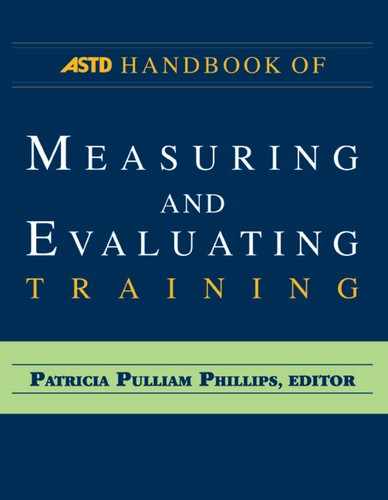 Section IV
Section IV
Measurement and
Evaluation at Work

Section IV describes the last two steps in the measurement and evaluation process: reporting and implementation. These two steps put evaluation to work. We can plan an evaluation to the nth degree, we can collect data using textbook protocols, and we can analyze the data until we have nothing left to analyze. But, if no action is taken as a result of all these efforts, the evaluation process becomes just another activity.
The first step toward putting measurement and evaluation to work is reporting the results. Quantitative data show the results obtained through the evaluation; qualitative data tell the story. Together, these two types of data develop a powerful profile of what is working and what is not working with training programs. The key is to present relevant results in such a way that the audiences believe and accept them as well as feel compelled to take action.
To make evaluation work, data must be used to improve processes. When we speak of evaluation we often focus on program success. But using the results to improve programs and process is the way to achieve positive return on the evaluation investment. To effectively use evaluation data, systems must be in place to support its implementation. This requires technology as well as an instructional design approach that puts evaluation first rather than last (see Section I). Additionally, applying evaluation to a variety of types of programs provides an across-the-board look at how training is doing.
Section IV will provide you insights into
- reporting evaluation results
- selecting technology that will support your evaluation efforts
- using evaluation data to provide evidence of training success
- applying measurement and evaluation processes to different types of programs.
